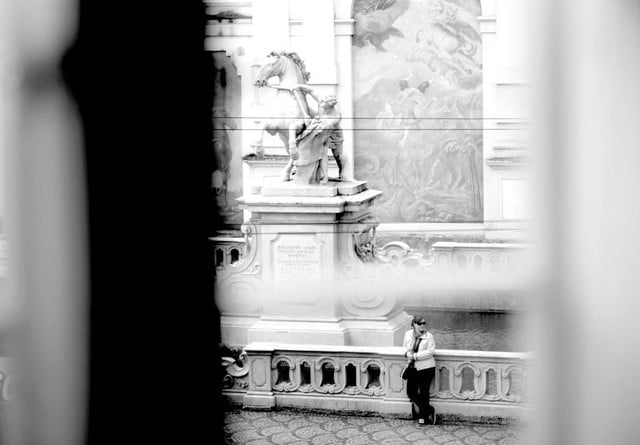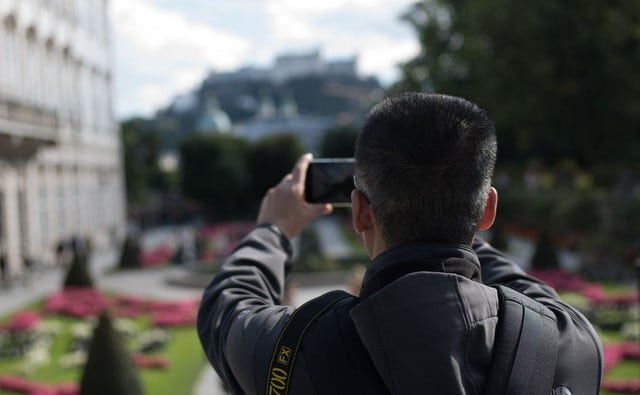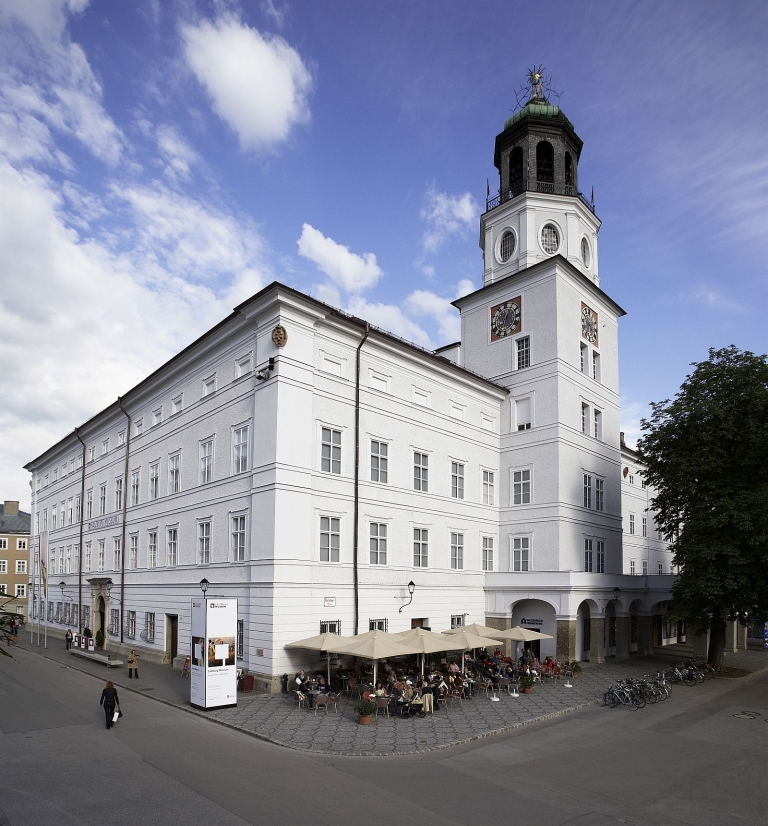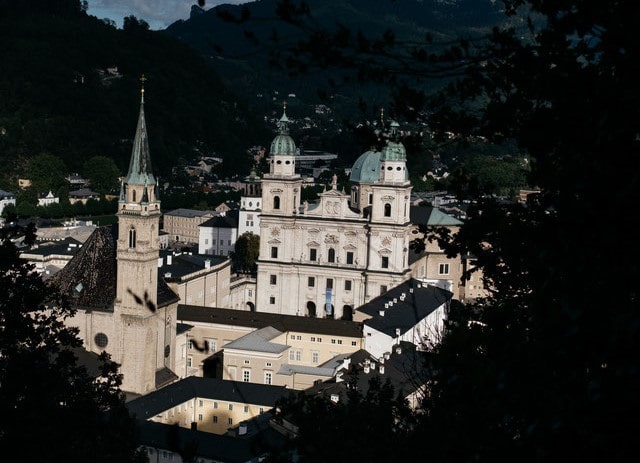
PERFECT LOCATION

Getreidegasse
Set one foot outside the door and you’re already slap bang in the middle of what we call Salzburg’s “Golden Mile”. It reflects the prosperity and splendour of a small principality, and is where nearly all the big historical families resided. It used to be called the “Trabegasse”; to this day, we still use the expression “trabig” to mean “busy”. It’s been here since the 11th century, the mother of all shopping streets with plenty of boutiques and shops. And it remains the city’s central shopping avenue to date.

MOZART’S BIRTHPLACE
A couple of houses further down, at Getreidegasse 9, is the place where the greatest musical genius of all time was born: Wolfgang Amadeus Mozart. His relationship with Salzburg was, shall we say, ambivalent. However, he kept in close contact with his friends in the town. It’s likely that Mozart visited our building: 18 letters refer to the inhabitants of the later “Däublhaus”, named after Franz de Paula Däubl, a friend and colleague of Mozart at the Hofmusikkapelle (Court Music Orchestra) whom Wolferl was particularly fond of and to whom he sent his warmest regards on several occasions.
Because of our deep reverence for Mozart, we absolutely refuse to kitschify or sell off cheap anything to do with him.

Festival Hall
The facade of the Große Festspielhaus is right in front of us. It holds 2,300 people seated, and there are often several hundred more gathered on, in front of and behind its huge stage. The Hofstall-gasse is described as “the most beautiful interval foyer in the world”. The “Haus für Mozart”, the “Felsenreitschule” (former Summer Riding School) and the “Universitätsaula” (university hall) are further important Festival venues in the immediate vicinity. Nowhere else is culture as tightly packed as in Salzburg’s old town.

ANCIENT HORSE WELL
In former times, horses roamed this place where nowadays guests of the Salzburg Festival gather, dressed in all their finery. The horses belonging to the Archbishop’s bodyguards used to be washed off in the Pferde¬schwemme (horse well) before being taken to the Hofmarstall (now the Große Festspielhaus) or to the Reitschule (riding school) hewn into the rock. It also used to be the site of the town’s “Heuwaage” (scales for weighing hay and straw), hence its apt former name of “Heuwaagplatz”. Even today, measures are taken: the outstanding performances of the artists at the Salzburg Festival that certainly measure up to expectation.

Mönchsberg
The mighty face of the Mönchsberg towers right outside our building. This was where Peter Handke used to live, next to a secret vineyard. In summer, cows graze on its meadows. In winter, children whizz down the steep slopes on sledges. A paradise and recreation area in the heart of the city, immortalised by the “Salzburger Nockerl” ‒ a famous culinary treat supposed to represent the hills surrounding Salzburg.

Museum of Modern Art
Back in the day, a spot of respectable gambling used to go on here: Salzburg’s casino was located on the Mönchsberg until it found a new permanent home at Klessheim Castle. Today we call “Faites votre jeu!” (“place your bets!”) to the international artists who exhibit their modern art here in this unobtrusive building. The Mönchsberg lift to the museum is also situated just a few metres from the Blaue Gans. The museum houses a sophisticated restaurant which offers the best view of the city! Nearby, a small sculpture garden exhibits works by James Turrell, Not Vital and Mario Merz.

MIRABELL PALACE GARDENS
You don’t have to like Baroque garden architecture and its approach to Nature, but there is something magical about the Mirabell Gardens nonetheless. The modern neighbourhood surrounding it, featuring the Ropac Gallery and the newly built Mozarteum University Salzburg, makes for a pleasant contrast. To the rear is the “Kongresshaus” (Salzburg Congress). Walking distance (at a relaxed pace): 7 minutes.

Festung Hohensalzburg
Perched like a crown above the city, this majestic fortress complex is the largest of its kind in Central Europe. It was the favoured haven of the Archbishop ‒ mostly because he was scared of his own people who weren’t always treated well by the strict sovereigns. This is also where the legend of the “Salzburger Stier” (Salzburg bull) comes from, which earned us the rather unflattering nickname “Stierwascher” (bull washers). Ask for the story; people will be happy to tell it.

Domquartier
A tour through the Baroque heart of the City of Salzburg: for the first time in 200 years, the residential and cathedral area – including the Benedictine Abbey St. Peter – can be experienced in an interconnected walking tour. Instagrammability at its best – from the cathedral’s arches you can enjoy the most fantastic view of the city!

Salzburg Museum
These days, people interested in Salzburg take lodgings where in former times the archbishops used to live. Visitors to this multi-museum, comprising several sites, gain a profound insight into Salzburg’s history and special features.

WORLD HERITAGE
“The gift of God and human creation” ‒ that was how Stefan Zweig, who fled Salzburg from the Nazis, described the essence of the city that forms an overwhelmingly beautiful ensemble of different architectural styles set in picturesque scenery. UNESCO thought so too: Salzburg’s old town has been listed as a World Heritage Site since 1997 ‒ and we’re right at the heart of it!



